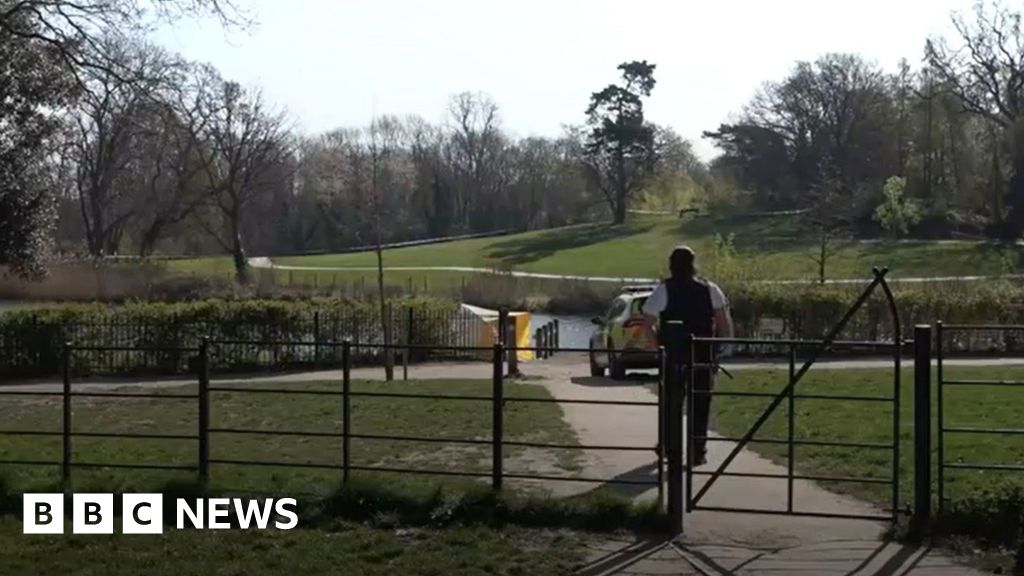A video has emerged showing the final moments of more than a dozen Palestinian emergency workers shot dead by Israeli troops in Gaza last month, casting doubt on Israeli claims that soldiers opened fire on vehicles “advancing suspiciously.” The video is filmed from the front of a vehicle and shows a convoy of clearly marked ambulances moving along a road at dawn, with headlights and flashing emergency lights on. The Palestine Red Crescent Society (PRCS) says the video was found on the phone of one of the 15 ambulance and relief team members killed by the Israeli military.
Their bodies were found in a mass grave more than a week after they were reported as missing . Eight of the 14 bodies recovered from the site in the southern Rafah area were identified as members of the PRCS, five as civil defense, and one as a UN agency employee, PRCS said in a statement. The deaths sparked international condemnation, and the footage appears to contradict the assertion by the Israeli military that some vehicles were moving suspiciously without lights.

The Israel Defense Forces (IDF) asserted last week that “several uncoordinated vehicles were identified advancing suspiciously toward IDF troops without headlights or emergency signals. IDF troops then opened fire at the suspected vehicles.” After the video emerged, the IDF repeated that the incident was being investigated.
“All claims, including the documentation circulating about the incident, will be thoroughly and deeply examined to understand the sequence of events and the handling of the situation,” it said Saturday. The video shows the convoy stopping when it comes across another vehicle at the side of the road – which the PRCS says was an ambulance that had been sent earlier to help injured civilians. Two of the rescuers who get out of the vehicles are wearing uniforms.
A fire truck and an ambulance at the scene are marked with the PRCS insignia. Almost immediately there is intense gunfire, which can be heard hitting the convoy. The video ends, but the audio continues for five minutes.
The paramedic filming, identified by the PRCS as Rifaat Radwan, is heard repeatedly saying the “shahada,” which Muslims recite when facing death. He asks God for forgiveness and says he knows he is going to die. At one point he says: “Forgive me mom, this is the path I chose – to help people – I swear I didn’t choose this path but to help people.
” The voices of others in the convoy can also be heard, as well as those of people shouting commands in Hebrew. It’s not clear who they are or what they are saying. The IDF said on April 1 that “following an initial assessment, it was determined that the forces had eliminated a Hamas military operative, Mohammad Amin Ibrahim Shubaki, who took part in the October 7 massacre, along with 8 other terrorists from Hamas and the Islamic Jihad.
” The IDF did not offer proof of the identity of the alleged terrorists. CNN has obtained from the PRCS the names of 14 of those killed; none is identified as Mohammad Shubaki. The PRCS said the name of the fifteenth man killed – an UNRWA employee – was withheld out of respect for his family but was not the name given by the Israeli military.
The IDF added that it was “not surprising that terrorists are once again exploiting medical facilities and equipment for their activities.” But the next day, the IDF said the incident was being investigated. An Israeli military official told CNN last week that Israeli forces buried the bodies of the workers because they expected it would take time to coordinate their retrieval with the PRCS and the United Nations.
Satellite imagery from March 23, first published by Al Jazeera Arabic and analyzed by CNN, shows Israeli army vehicles surrounding a cluster of five ambulances from the PRCS and Civil Defense. Another satellite image, also published by Al Jazeera and analyzed by CNN, dated March 25, shows an Israeli tank, an excavator, and other military vehicles at the same location. Where the ambulances once stood, remnants of vehicles protruded from disturbed ground.
.
Environment

Video showing final moments of Gaza emergency workers casts doubt on Israeli account of killings
















